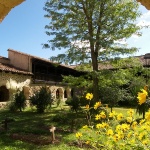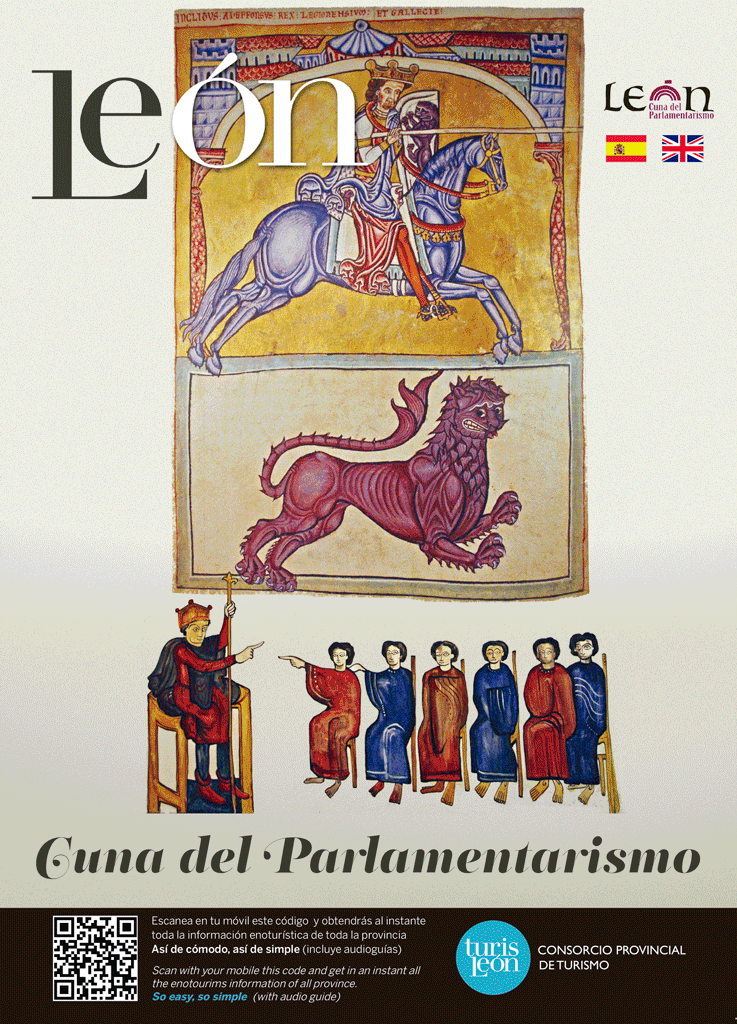Monastery of Santa María
City: Gradefes
BIC date: 02-September-1924
It was founded in 1168 by the Esla River, as a monastery from the Monjas Bernardas (“Bernard Nuns”). The construction of its church began in March 1177, according to an inscription in the lower Northern wall. The monastery benefitted from the estates donated by its founders, especially its subsequent abbess, Doña Teresa Pérez, García Pérez’s widow (García Pérez was a knight commanded by Alfonso VII). It also received gifts and dowries from local believers.
The abbess of Gradefes held civil and criminal jurisdiction over several towns in the region, thus constituting a merindad (a type of district) that allowed her from tax collection to civil justice administration.
The first community was constituted by Cistercian nuns from the monastery of Tulebras (Navarre). In the early 7th century, the whole group moved to Medina de Rioseco (Valladolid), and the monastery was left dilapidated until their return, with Doña Isabel de Quiñones as abbess. This is the only female Cistercian monastery in Spain.
The expropriation of 1835 and the Republican Decree (Decreto Republicano) of 1868 that suppressed religious orders, it was in risk of abandonment. This was overcome in 1882 with the incorporation of the nuns from Aviés (Asturias) and Otero de las Dueñas (León). This use has continued since then, and the monastery was restored recently.
The Cistercian church of Gradefes is not oriented as usual. It is formed by an apse with three naves that are surrounded by vaulted ceilings lying on ribs. At the same time, these ribs lean on quadrangular pillars with half columns attached to them. The apse (of a transitional Romanesque style) and the chapter are the oldest preserved elements, from the 12th century.
The crossing was built later, the choir and other areas being rounded off in the 17th century. This contributes to the building’s artistic variety. There is a plain decoration of capitals, according to the Cistercian criterion, which believed in removing the “superfluous ornaments”, rejected by Saint Bernard.
The ceiling of main chapel and of the central apsidiole has concave plaster on ribs, with crisscross at the chapel and equilibrium, thus constituting the most remarkable advance of the building. There are pointed and rounded arches.
One of the capitals represents a psicostasis or weighing of souls, Egiptian theme embraced by Medieval Christian iconography. It portrays Saint Michael weighing the souls and the devil loading down one side of the scale.
The walls are made of ashlar stone, properly cut.
The cloister, shaped like a rural corridor, can be visited. It serves as nuns’ cemetery and entrance to the chapterhouse, conveniently restored.
At the church we can find the sepulchers with the recumbent figures of the founding spouses, an art piece from the 13th century that was polychrome. Next to the sacristy’s door, there are two engravings: a cow’s head coat of arms and a woman in a headdress, from the 15th century.
The polychrome figures of a 12th century Virgin Mary and a Gothic Christ are guarded in the monastic rooms. They were part of a 14th century Calvary. There are also clothes and shoes owned by the founder. Likewise, a Romanesque image of Our Lady of Gradefes and a real size 14th century crucifix are guarded in these rooms.
But one of the most eye-catching images is the “niño peregrine” (pilgrim child), Baroque figure that is only dressed as a pilgrim during Jacobean Years (When Saint James’ falls on a Sunday).
Some lines written over the gate used to warn walkers who accessed in: “You, entering through these gates, stop and think, this site invites you to a die in life, in order to live in death”.
USEFUL DATA
Address: San Bernardo,54 Gradefes CP: 24160
Phone number: (+34) 987 33 30 11
Opening hours:
- Monday through Friday: just group visits with prior notice.
- Saturdays, Sundays and holidays from 10.30 AM to 12.30 PM and 4.30 to 6.30 PM.
IMAGES



